
Agrotis daedalus is a moth of the family Noctuidae. It is found throughout the Great Plains, from west Texas, New Mexico and Arizona west to northern Nevada north to southern Alberta and south central Saskatchewan.

Raphia frater, the brother, is a moth of the family Noctuidae. It is found from Nova Scotia west, across the forested regions of Canada to British Columbia, south to Mississippi in the east. The southern limits in the west are uncertain due to confusion with several closely related species or forms.

Lacinipolia implicata, the implicit arches moth, is a moth of the family Noctuidae. It is found in eastern North America, from Connecticut south to South Carolina, west to Ontario, Michigan and Texas.
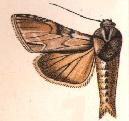
Cucullia lilacina is a moth of the family Noctuidae. It is found in Mexico and the south-western United States. In the United States, it is found in the mountains of southern Arizona, reaching as far north as the White Mountains in the east and the Grand Canyon in the west. It is also present in most of New Mexico and in western Texas. In Mexico it has been recorded from the Federal District and Veracruz. A single female is known from Juan Vinas in central Costa Rica.

Cucullia oribac is a moth of the family Noctuidae first described by William Barnes in 1904. It is found in Mexico and the southwestern United States. In the United States, it is found in the mountains of southern Arizona, north to Gila County. It is also found in southwestern New Mexico, and the Guadalupe Mountains in western Texas. In Mexico, it is known from the Federal District, Veracruz, Morelos and Chiapas.

Hypotrix trifascia is a moth of the family Noctuidae. It is found from southern Utah and Colorado southward through Arizona, New Mexico, and western Texas to northern Mexico.
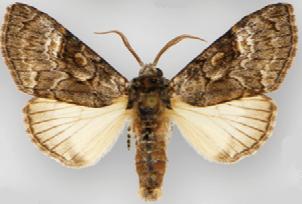
Charadra moneta is a moth of the family Noctuidae. It is found from central and eastern Arizona, the San Mateo Mountains of New Mexico, the Guadalupe Mountains of New Mexico and Texas, and the Big Bend region of Texas; south to the Sierra Madre in Nuevo León, northern Mexico.
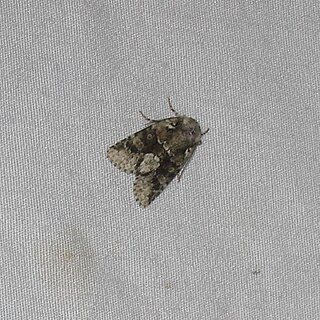
Lacinipolia explicata. the explicit arches moth, is a moth of the family Noctuidae. It is found in the south-eastern part of the United States, from Kentucky and North Carolina south to Florida and west to Missouri and Texas.

Lacinipolia laudabilis, the laudable arches moth, is a moth of the family Noctuidae. It is found in the United States, where it has been recorded from Alabama, California, Florida, Georgia, Kentucky, Maryland, North Carolina, Oklahoma, Massachusetts, Pennsylvania, South Carolina, Tennessee, Texas and Virginia. It is also found in Mexico and Costa Rica. It has been recorded from Great Britain, where it was probably accidentally imported, but it might also be a rare immigrant.

Lacinipolia vicina is a moth in the family Noctuidae. It is found in Massachusetts, New York, Pennsylvania, Virginia, North Carolina, New Jersey and possibly Indiana.
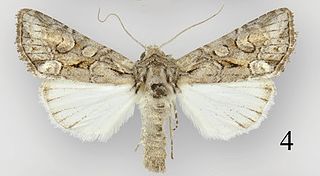
Lacinipolia teligera is a moth in the family Noctuidae. It is found from the Great Plains of central Colorado and eastern Kansas southward to central Texas.
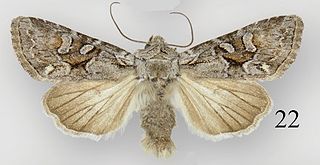
Lacinipolia pensilis is a moth in the family Noctuidae. It is found in the western cordilleran region from central British Columbia and western Alberta southward to at least Washington and central Utah.

Lacinipolia acutipennis is a moth in the family Noctuidae. It is common throughout xeric, low elevation habitats of western North America. The core range includes the dry, western portions of the Great Plains, the Great Basin, and the western intermontane valleys north of the Sonoran zone, from southern Saskatchewan and Alberta southward to northern Arizona and New Mexico.

Lacinipolia dimocki is a moth in the family Noctuidae. It is found on the eastern slope of the Washington Coast Ranges to southern California.
Lacinipolia incurva is a species of moth in the family Noctuidae. It was described by John B. Smith in 1888 and is found in North America, where it has been recorded from California, Arizona, New Mexico, Texas, Utah and Colorado.
Lacinipolia longiclava is a species of cutworm or dart moth in the family Noctuidae. It is found in North America.

Lacinipolia meditata, or the thinker moth, is a species of cutworm or dart moth in the family Noctuidae. It is found in North America.
Lacinipolia consimilis is a species of cutworm or dart moth in the family Noctuidae. It is found in North America.
Lacinipolia bucketti is a species of cutworm or dart moth in the family Noctuidae. It is found in North America.
Lacinipolia martini is a species of cutworm or dart moth in the family Noctuidae. It is found in North America.











